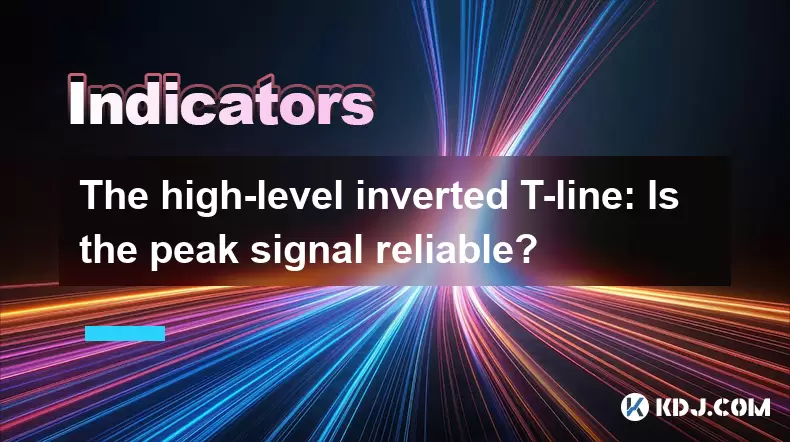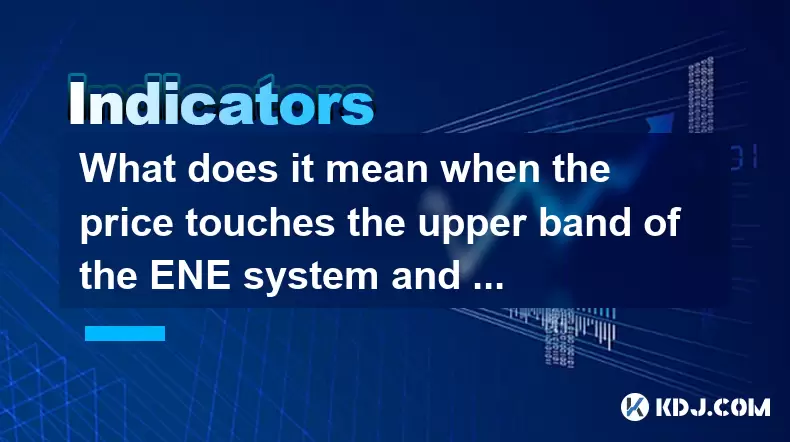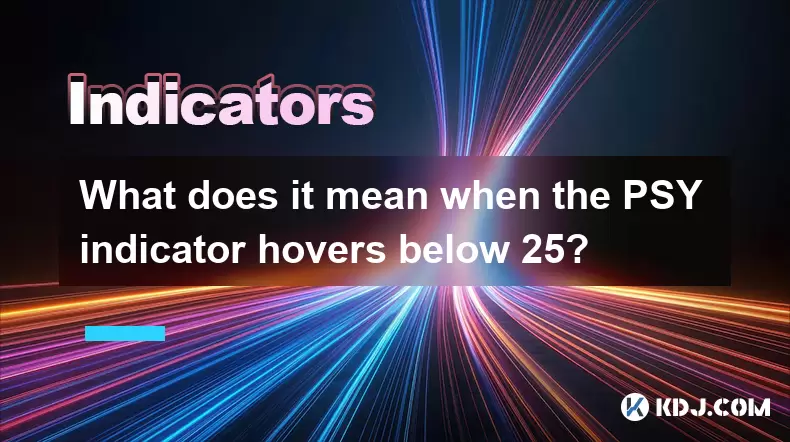-
 Bitcoin
Bitcoin $116700
0.48% -
 Ethereum
Ethereum $4213
6.27% -
 XRP
XRP $3.280
1.22% -
 Tether USDt
Tether USDt $1.000
0.02% -
 BNB
BNB $805.1
2.46% -
 Solana
Solana $180.2
2.65% -
 USDC
USDC $0.0000
0.02% -
 Dogecoin
Dogecoin $0.2412
8.50% -
 TRON
TRON $0.3356
-1.11% -
 Cardano
Cardano $0.8108
3.59% -
 Hyperliquid
Hyperliquid $43.89
8.53% -
 Chainlink
Chainlink $21.15
10.75% -
 Stellar
Stellar $0.4502
1.41% -
 Sui
Sui $3.935
4.69% -
 Bitcoin Cash
Bitcoin Cash $570.7
-1.75% -
 Hedera
Hedera $0.2636
3.28% -
 Avalanche
Avalanche $24.25
4.48% -
 Ethena USDe
Ethena USDe $1.001
0.03% -
 Litecoin
Litecoin $122.0
-0.08% -
 Toncoin
Toncoin $3.445
2.68% -
 UNUS SED LEO
UNUS SED LEO $8.979
-0.08% -
 Shiba Inu
Shiba Inu $0.00001379
6.73% -
 Uniswap
Uniswap $10.91
2.00% -
 Polkadot
Polkadot $4.106
5.39% -
 Dai
Dai $1.000
0.02% -
 Pepe
Pepe $0.00001227
9.07% -
 Bitget Token
Bitget Token $4.507
0.72% -
 Cronos
Cronos $0.1576
3.40% -
 Monero
Monero $272.0
-1.68% -
 Ethena
Ethena $0.7502
21.27%
The high-level inverted T-line: Is the peak signal reliable?
The high-level inverted T-line pattern signals potential market reversals, but its reliability depends on market conditions, volume, and the overall trend.
Jun 03, 2025 at 12:35 am

The high-level inverted T-line is a technical analysis pattern often discussed within the cryptocurrency trading community. This pattern, characterized by its distinct shape, is believed to signal potential market reversals or significant price movements. Traders and analysts often debate the reliability of such patterns, especially when they appear at peak levels. In this article, we will delve into the intricacies of the high-level inverted T-line, examining its formation, interpretation, and the reliability of its peak signals.
Understanding the Inverted T-line Pattern
The inverted T-line pattern is a visual representation on a price chart that resembles an upside-down letter "T". This pattern typically forms when the price of a cryptocurrency reaches a new high, followed by a sudden and significant drop, creating a vertical line. The horizontal part of the "T" is formed when the price stabilizes at a lower level, often indicating a potential reversal or a continuation of the downtrend.
To identify an inverted T-line, traders look for the following characteristics:
- A sharp peak in the price chart, marking the top of the vertical line.
- A subsequent drop that is at least as significant as the rise to the peak.
- A period of consolidation following the drop, forming the horizontal line.
The Significance of the High-Level Inverted T-line
When an inverted T-line appears at a high level, it is often considered a critical signal by traders. The high-level inverted T-line suggests that the cryptocurrency has reached a peak that may not be sustainable, and a reversal could be imminent. This pattern is particularly watched in the context of bullish markets, where it can indicate that the upward momentum is waning.
The significance of this pattern lies in its ability to highlight potential exhaustion points in the market. When a cryptocurrency reaches a new high and then experiences a sharp decline, it can signal that the buying pressure is no longer sufficient to maintain the price at those levels. This can be a warning sign for traders who are long on the asset, prompting them to consider taking profits or adjusting their positions.
Analyzing the Reliability of Peak Signals
The reliability of the peak signal provided by the high-level inverted T-line is a topic of much debate among traders. Several factors can influence the reliability of this signal, including market conditions, volume, and the overall trend.
Market conditions play a crucial role in determining the reliability of the inverted T-line. In highly volatile markets, such patterns may be more frequent but less reliable due to the rapid price movements. Conversely, in more stable markets, the inverted T-line may be a more dependable indicator of a potential reversal.
Volume is another critical factor. A high-level inverted T-line accompanied by significant trading volume is generally considered more reliable. High volume during the peak and subsequent drop suggests strong market participation, increasing the likelihood that the pattern is a true signal of a reversal.
The overall trend should also be considered. If the inverted T-line forms during a prolonged uptrend, it may be a more reliable signal of a potential reversal. However, if the pattern appears during a period of consolidation or within a downtrend, its reliability may be diminished.
Case Studies: Real-World Examples
To better understand the reliability of the high-level inverted T-line, let's examine a few real-world examples from the cryptocurrency market.
Bitcoin (BTC) in 2017: One of the most famous examples of a high-level inverted T-line occurred during the Bitcoin bull run of 2017. In December of that year, Bitcoin reached an all-time high of nearly $20,000, followed by a sharp drop that formed a clear inverted T-line. This pattern signaled the end of the bull run, and Bitcoin entered a prolonged bear market.
Ethereum (ETH) in 2018: Ethereum experienced a similar pattern in early 2018, when it reached a peak of around $1,400. The subsequent drop and consolidation formed an inverted T-line, which accurately predicted a significant downturn in the price of Ethereum.
Ripple (XRP) in 2020: In early 2020, Ripple formed an inverted T-line after reaching a high of approximately $0.35. The pattern was followed by a significant price drop, validating the signal as a reliable indicator of a reversal.
These case studies illustrate that the high-level inverted T-line can be a powerful tool for predicting market reversals, but its reliability can vary based on the specific circumstances of each case.
Strategies for Trading the Inverted T-line
Traders who wish to capitalize on the high-level inverted T-line pattern can employ several strategies to enhance their trading decisions. Here are some approaches that traders might consider:
Short Selling: When an inverted T-line forms at a peak, traders may consider short selling the cryptocurrency. This involves borrowing the asset and selling it at the peak, with the intention of buying it back at a lower price to realize a profit. To execute this strategy:
- Identify a clear inverted T-line pattern on the price chart.
- Confirm the pattern with high trading volume.
- Open a short position at the peak or shortly after the drop begins.
- Set a stop-loss order above the peak to manage risk.
- Monitor the price for signs of further decline, and close the position when the desired profit level is reached.
Taking Profits: For traders who are already long on the cryptocurrency, the appearance of an inverted T-line at a high level may be a signal to take profits. This involves selling a portion or all of their holdings to lock in gains before a potential reversal. To implement this strategy:
- Recognize the formation of an inverted T-line at a peak.
- Assess the overall market conditions and volume to confirm the signal.
- Decide on the percentage of holdings to sell based on risk tolerance and market analysis.
- Execute the sale at the peak or during the initial drop.
- Consider setting a trailing stop-loss to capture further gains if the price continues to rise.
Waiting for Confirmation: Some traders prefer to wait for additional confirmation before acting on the inverted T-line signal. This can involve waiting for the price to break below the horizontal line of the "T" or for other technical indicators to align with the pattern. To use this approach:
- Identify the inverted T-line and monitor its development.
- Look for a break below the horizontal line, signaling a confirmed reversal.
- Use additional technical indicators, such as moving averages or RSI, to support the decision.
- Enter a trade based on the confirmed signal, adjusting stop-loss and take-profit levels accordingly.
Tools and Indicators to Enhance Analysis
To enhance the analysis of the high-level inverted T-line, traders can use various tools and indicators to gain a more comprehensive view of the market. Some of the most commonly used tools include:
Moving Averages: These can help smooth out price data and identify trends. A crossover of short-term and long-term moving averages can provide additional confirmation of a potential reversal signaled by the inverted T-line.
Relative Strength Index (RSI): The RSI is a momentum oscillator that can indicate overbought or oversold conditions. An RSI reading above 70 may suggest that the cryptocurrency is overbought and due for a correction, aligning with the inverted T-line signal.
Volume Indicators: Volume can provide valuable insights into the strength of a price move. High volume during the formation of the inverted T-line increases its reliability. Volume indicators such as the On-Balance Volume (OBV) can help traders assess the strength of the signal.
Candlestick Patterns: Combining the inverted T-line with other candlestick patterns, such as shooting stars or bearish engulfing patterns, can provide further confirmation of a potential reversal.
By integrating these tools and indicators, traders can make more informed decisions when analyzing the high-level inverted T-line and its peak signals.
Frequently Asked Questions
Q: Can the high-level inverted T-line be used for short-term trading?
A: Yes, the high-level inverted T-line can be used for short-term trading, particularly for identifying potential entry and exit points for short positions. Traders should, however, use additional technical indicators and consider market conditions to enhance the reliability of the signal.
Q: How can I differentiate between a false signal and a reliable inverted T-line?
A: To differentiate between a false signal and a reliable inverted T-line, traders should look for confirmation from other technical indicators, such as volume and momentum oscillators. A high-level inverted T-line accompanied by high trading volume and overbought conditions is generally more reliable.
Q: Are there any specific cryptocurrencies where the inverted T-line pattern is more common?
A: The inverted T-line pattern can be observed across various cryptocurrencies, but it may be more common in highly volatile assets like Bitcoin, Ethereum, and other major altcoins. The pattern's reliability can vary depending on the specific market conditions and trading volume of each cryptocurrency.
Q: How can I improve my skills in identifying and trading the inverted T-line pattern?
A: To improve your skills in identifying and trading the inverted T-line pattern, consider the following:
- Practice analyzing historical price charts to recognize the pattern.
- Use demo trading accounts to test strategies without risking real capital.
- Stay updated with market news and trends to better understand the context in which the pattern forms.
- Continuously learn and refine your approach by incorporating feedback from your trading results.
Disclaimer:info@kdj.com
The information provided is not trading advice. kdj.com does not assume any responsibility for any investments made based on the information provided in this article. Cryptocurrencies are highly volatile and it is highly recommended that you invest with caution after thorough research!
If you believe that the content used on this website infringes your copyright, please contact us immediately (info@kdj.com) and we will delete it promptly.
- Trump, Crypto Vehicle, and WLFI Tokens: A New York Minute on the Latest Buzz
- 2025-08-10 00:30:12
- Wheat Penny Fortune: Unearthing Valuable Coins in Your Pocket Change
- 2025-08-10 00:35:19
- AI Coin Mania: Dubai Millionaires Eye 20x Gains!
- 2025-08-09 23:10:12
- ChatGPT's Hot Takes: Meme Coins to Buy Now for a Wild 2025!
- 2025-08-09 23:10:12
- Jurassic Park Vibes in Your Pocket: The Colourful Canadian Coin Featuring a Dinosaur Eye
- 2025-08-09 23:50:12
- Altcoins on the Radar: VeChain, Ethereum, and the Shifting Crypto Landscape
- 2025-08-09 23:50:12
Related knowledge

What does it mean when the price is trading above the SAR indicator but the red dots are densely packed?
Aug 09,2025 at 11:49pm
Understanding the SAR Indicator and Its Visual SignalsThe SAR (Parabolic Stop and Reverse) indicator is a technical analysis tool used primarily to de...

What does it mean when the MACD histogram continues to shorten but the price reaches a new high?
Aug 09,2025 at 09:29pm
Understanding the MACD Histogram and Its ComponentsThe MACD (Moving Average Convergence Divergence) indicator is a widely used technical analysis tool...

What does it mean when the Triple Moving Average (TRIX) turns downward but the price doesn't fall?
Aug 09,2025 at 12:42pm
Understanding the Triple Moving Average (TRIX) IndicatorThe Triple Moving Average, commonly known as TRIX, is a momentum oscillator designed to filter...

What does it mean when the price touches the upper band of the ENE system and then falls back?
Aug 10,2025 at 12:42am
Understanding the ENE Indicator StructureThe ENE (Envelope) indicator is a technical analysis tool used in cryptocurrency trading to identify potentia...

What does it mean when the Williams' oscillator repeatedly hits bottoms but fails to rebound?
Aug 09,2025 at 09:28am
Understanding the Williams %R OscillatorThe Williams %R oscillator, developed by Larry Williams, is a momentum indicator used in technical analysis to...

What does it mean when the PSY indicator hovers below 25?
Aug 10,2025 at 01:14am
Understanding the PSY Indicator in Cryptocurrency TradingThe PSY indicator, also known as the Psychological Line indicator, is a momentum oscillator u...

What does it mean when the price is trading above the SAR indicator but the red dots are densely packed?
Aug 09,2025 at 11:49pm
Understanding the SAR Indicator and Its Visual SignalsThe SAR (Parabolic Stop and Reverse) indicator is a technical analysis tool used primarily to de...

What does it mean when the MACD histogram continues to shorten but the price reaches a new high?
Aug 09,2025 at 09:29pm
Understanding the MACD Histogram and Its ComponentsThe MACD (Moving Average Convergence Divergence) indicator is a widely used technical analysis tool...

What does it mean when the Triple Moving Average (TRIX) turns downward but the price doesn't fall?
Aug 09,2025 at 12:42pm
Understanding the Triple Moving Average (TRIX) IndicatorThe Triple Moving Average, commonly known as TRIX, is a momentum oscillator designed to filter...

What does it mean when the price touches the upper band of the ENE system and then falls back?
Aug 10,2025 at 12:42am
Understanding the ENE Indicator StructureThe ENE (Envelope) indicator is a technical analysis tool used in cryptocurrency trading to identify potentia...

What does it mean when the Williams' oscillator repeatedly hits bottoms but fails to rebound?
Aug 09,2025 at 09:28am
Understanding the Williams %R OscillatorThe Williams %R oscillator, developed by Larry Williams, is a momentum indicator used in technical analysis to...

What does it mean when the PSY indicator hovers below 25?
Aug 10,2025 at 01:14am
Understanding the PSY Indicator in Cryptocurrency TradingThe PSY indicator, also known as the Psychological Line indicator, is a momentum oscillator u...
See all articles

























































































